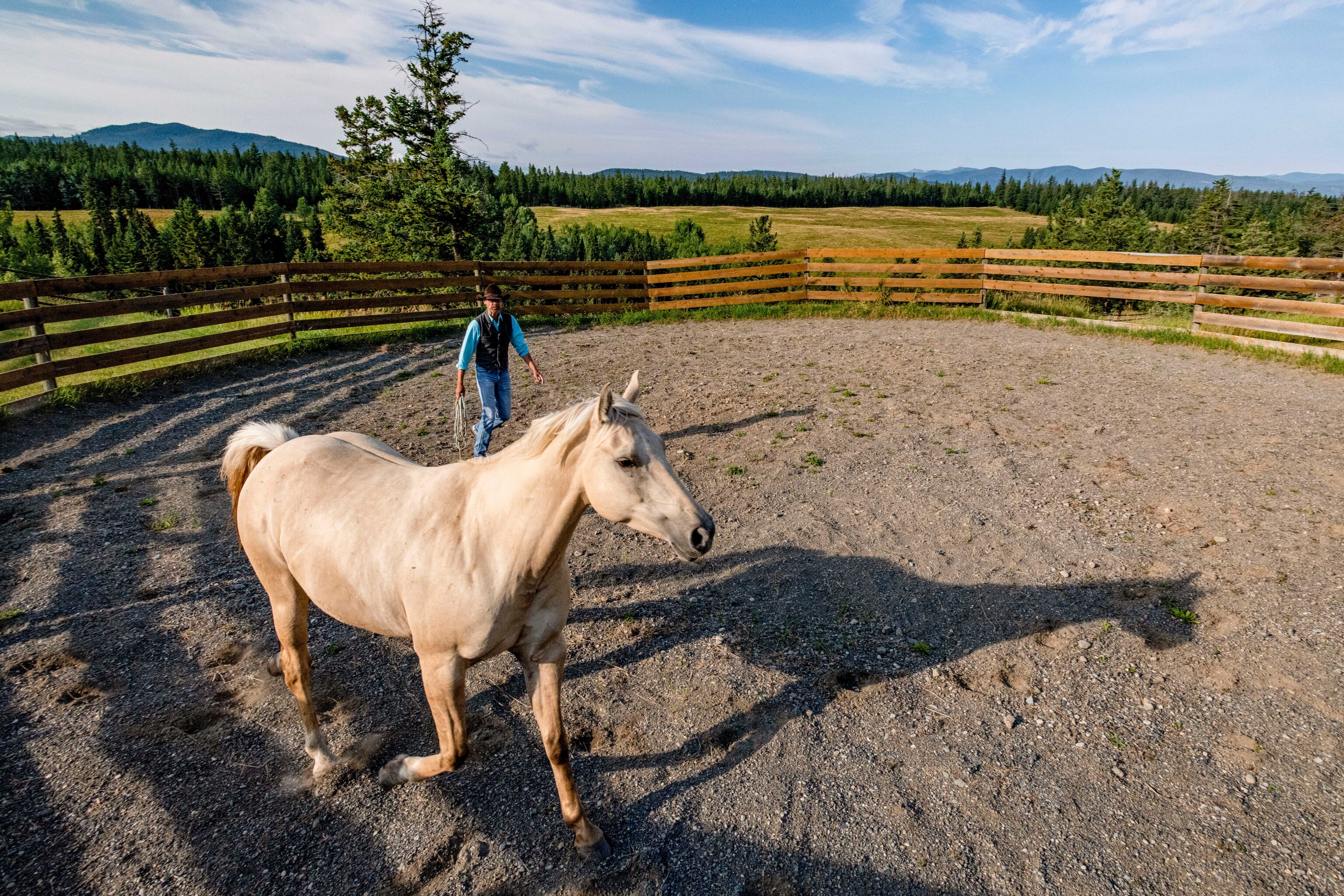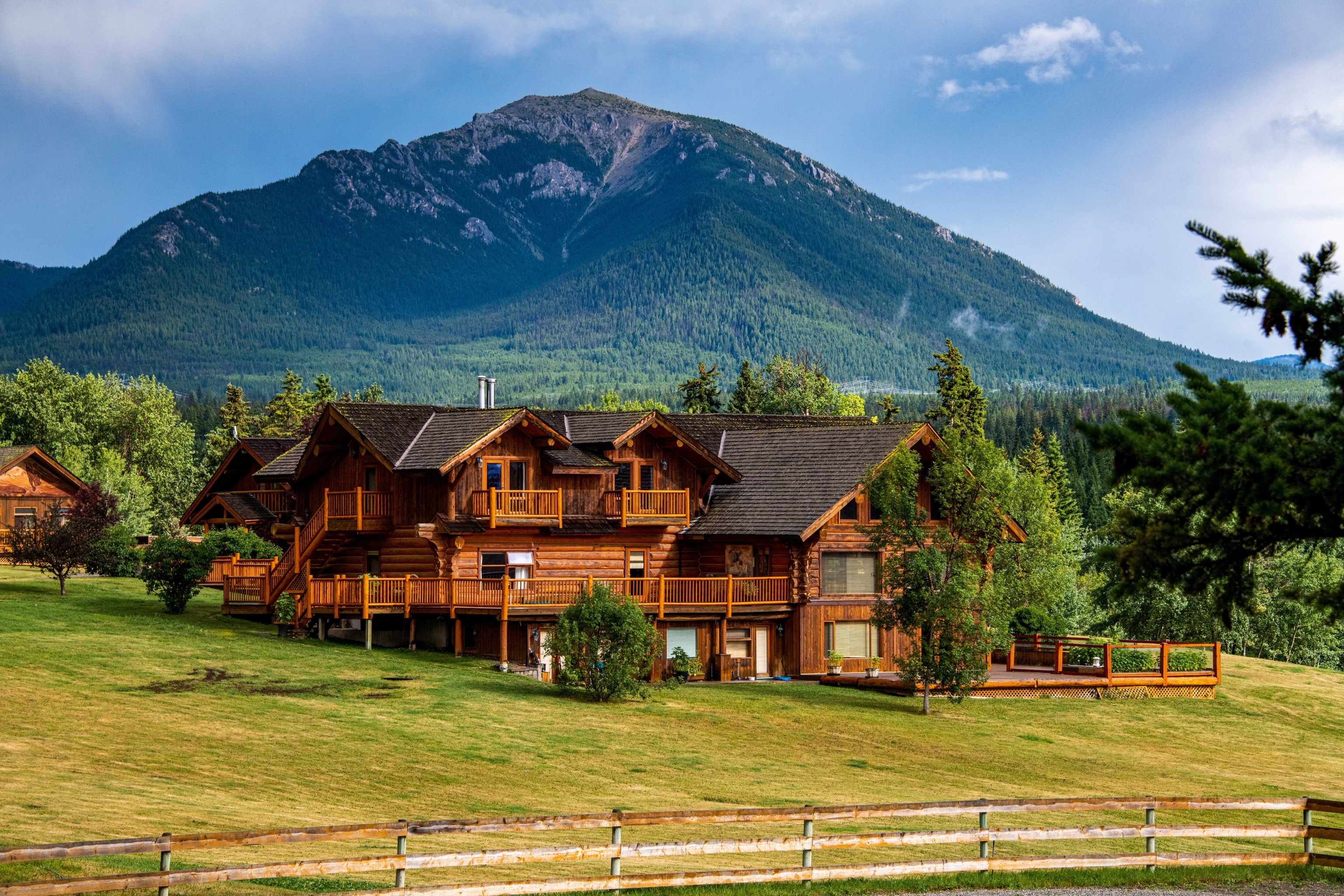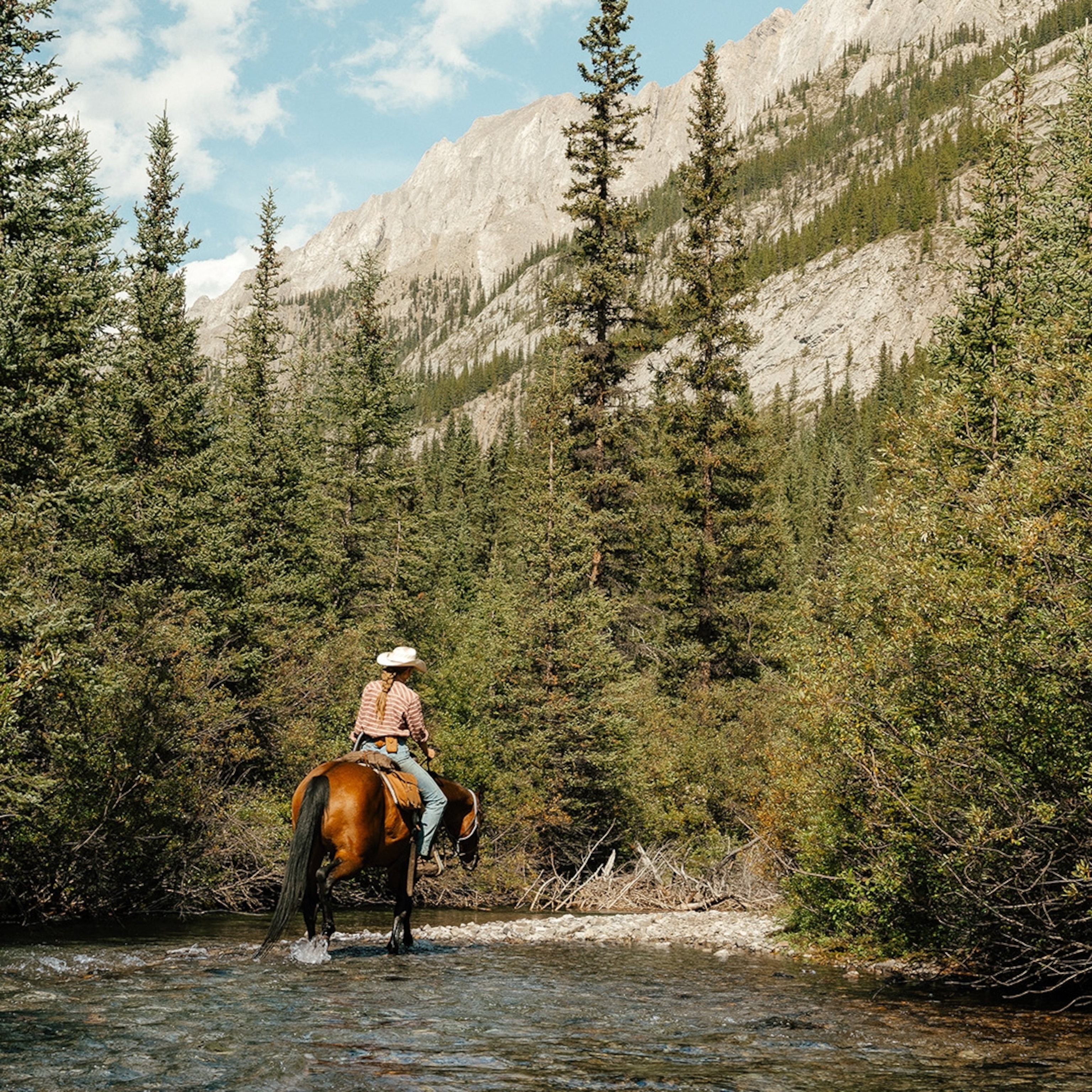
Cowboy country in British Columbia: a taste of pioneer days with a ranch stay
On Canada's Cariboo Chilcotin Coast, travellers can get a taste of the Western cowboy lifestyle with a ranch stay, where survival skills and equine etiquette are all part of the adventure.
“In some ranches, horses are treated like a bike you pulled off the rack,” laments Mike Christensen. He’s wearing a dog-eared cowboy hat and has a salt-and-pepper beard. “They don’t even know the horse’s name and degrade it to a vessel of transport,” he adds, shaking his head. “Here, we teach you how to build trust.”
Standing beside him is Monty, a horse the brown colour of autumn leaves. With the bridle hanging in his palm, Mike makes gentle clicking noises with his tongue and a barely discernible beckoning motion with his fingers towards Monty’s flank. He’s not touching the horse at all and yet, slowly, the steed starts to tip-toe in a circle around him. “Riding the horse is the least important thing. It’s connecting with them that’s key,” he explains. “I don’t want to sound too ‘hoodoo voodoo’, but it’s as much about energy as any physical pressure.”
Mike is the wrangler at Echo Valley Ranch & Spa, a 160-acre ranch with 30 head of cattle on British Columbia’s Cariboo Chilcotin Coast. The area is home to many of BC’s guest ranches and remains cowboy-and-cowgirl country, with the city of Williams Lake hosting the BC Cowboy Hall of Fame and the historic Stampede showground.
Sandwiched between the crenelated limestone Marble Range, boreal forest and salmon-rich Fraser River, the remote no-mobile-phone-service ranch is owned by Norm and Nan Dove. Now in his eighties, British-born Norm has called Canada home for 56 years. He bought the working ranch in 1990 and has been slowly converting it into an upmarket lodge. It’s a good example of how ranch culture is evolving out here, with horseback hacks combined with comfortable accommodation, fine dining and resort-style amenities such as a spa and yoga studio.
Having joined their Horse Harmony experience, I found myself in the ranch corral with Mike, the sun making us squint. Years ago, Mike used to sell suits in Denmark but came out to try riding and got a taste of the Western lifestyle. He started by living with a ranch family in Montana before migrating across the border 11 years ago. “I’m a cowboy now, absolutely!” he enthuses, his accent still Danish.
He assigns each of us in the group a steed based on our ability. He pairs me with Diago, a bay with a velveteen muzzle and brown eyes shaded by long eyelashes. “It’s disrespectful to expect them to perform without any introduction,” explains Mike, so I slowly run my hand from Diago’s neck, along his flank, around his hind and up the other side.

Then Mike demonstrates how to be in charge. “Horses are herd animals; they need a leader. The horse will take that role if you don’t and see what they can get away with,” he says with a grin. I walk slowly, just in front of Diago, and he follows, his muzzle almost brushing the back of my shirt. When I stop, he stops.
After an hour getting to know each other, we clop out of the corral and into the woods. As we wind through the conifer, pine and aspen forest, ducking to avoid errant branches, Mike encourages us to feel the movement of the horse — to sense how they respond to the slightest shift in our seat, the squeeze of a thigh or the light pressure of a heel. I find I barely have to use the reins at all.
Plodding along the trail, I catch glimpses of the Fraser River cutting a 5,778ft-deep canyon through the Marble Range, sage brush growing on the hillsides. I spy abandoned wooden cabins once used as offices for the river ferry that transported prospectors travelling from Lillooet, in southwestern BC, during the days of the gold rush. I think of those late-19th-century pioneers on horseback, too, surviving amid this wilderness, hunting and foraging to supplement their canned food rations.
Surviving the wild
Out here, where the wilderness dwarfs any dwellings, it’s vital ranchers have a few survival tricks up their sleeves. So, three hours later, after returning the horses to the stables, we re-enter the woods with Newfoundland-born Daryl Nippard. He’s the perfect person to lead Echo Valley Ranch & Spa’s Survival Spirit wilderness experience. “‘My dad would drop us off on an island with no shops at the weekend and pick us up on Monday, to teach us how to survive,” he says, pacing light-footedly through the woods, barely snapping a twig.
Before coming to the ranch, Daryl lived in Echo Valley for 15 years and was the only non-native to live on the nearby First Nation reserve. “They taught me to dry salmon the way they do, using smoking sheds,” he says, proudly.
“Look, no one goes into the bush and plans on getting lost, but it happens — and if it does, whaddya do first?” he asks. Silence from the group. “First thing: find a spot and sit down,” he teases, seating himself on a tree trunk. “You gotta calm your mind first. If it takes five hours, fine. This thing is your worst nightmare,” he continues, pointing to his head. “But it can also be your greatest asset.”
We continue through the woods. Sunlight spears through the treetops, highlighting neon-green moss and red pops of berries on the forest floor. A squirrel bounds through the leaf litter and the song of invisible birds filters down from the canopy. Daryl points out a set of cougar prints and doles out bush wisdom: “If a squirrel can eat it, you can eat it”; “look for deciduous trees — there’s always a spring nearby”; “if there’s a bear, light a fire all night and they won’t come near.” He tells us that porcupine tastes like fatty beef and squirrel like bacon.
We return to the ranch, hop in a 4x4 and head toward Fraser River. According to Daryl, it “runs red because it’s so full of salmon”. We roll the car to the edge of Marble Canyon, which yawns so wide it seems to swallow the sky. A few hardy ranchers can be seen in the valley below.
I ask Daryl what it is he loves about ranching life. “The quietness,” he replies, eyes on the horizon. “The vastness of the land lets your mind stretch and calm.”

Ranch hand
A 15-minute drive from Echo Valley Ranch & Spa is Big Bar Guest Ranch. Once private acreage, it was bought by the Stswecem’c Xgat’tem First Nation community three years ago with the aim of helping the town become economically self-sufficient. Only three members of staff are Indigenous, but they’re working to showcase more of their culture.
A 1930s log house stands at the centre of a kitchen garden, with beehives and a cluster of buildings that offer rooms, plus a handful of smarter log-cabins further away. With no TVs, limited wi-fi and meals taken in a communal dining room where jars of spruce syrup stand on the windowsill, the focus here is on immersion into ranch life.
Farm hand Catherine ‘Cat’ Jameson greets us in dungarees, a cotton neckerchief and a wide-brim straw hat. “I have eight pairs of dungarees in varying stages of decay,” she says with a laugh, wiping her hands on the overalls and proffering a hand. She leads us past a gaggle of fussing hens, towards a fenced patch of mud home to two pigs. “Here, we use everything, from the animals to growing food using regenerative farming techniques.” Cat brays to the nearby goats and they bleat in reply.
Cat introduces Aisling, a 19-year-old wrangler. They both sleep above the stables; with 25 horses, they’ve got their hands full. Aisling leads the group into a tack room lined with cowboy boots and hats then leaves us to find our size while she starts saddling up the horses for a ride. The saddles are impressive hunks of butter-soft leather engraved with floral motifs, hand-stitched leather stirrups and pommels worn to a high shine by many hands.
I claim a chestnut gelding, and we plod away into grass plains, where the cattle range freely. The landscape opens like a book, each valley fold revealing a new view. “I don’t know why people want to travel to other places, we’ve got it all here in Canada,” enthuses Cat from the back of the line.
After an hour, the rest of the group returns to the ranch, but I’m hankering to canter. Aisling takes me to the base of a hill and together we loosen the reins and let the horses fly up the incline, their nostrils flaring, manes streaked by the wind. Here was the freedom beneath boundless blue skies I’d imagined. I would be leaving with the scent of sage brush on my clothes, dust in my hair — and a new-found appreciation of life on the ranch.
Discover the World offers three nights at Echo Valley from £4,747 per person based on two sharing, including accommodation, meals with drinks, guided activities and use of the spa, sauna, pool and fitness facilities. Excludes flights. discover-the-world.com
To subscribe to National Geographic Traveller (UK) magazine click here. (Available in select countries only).







